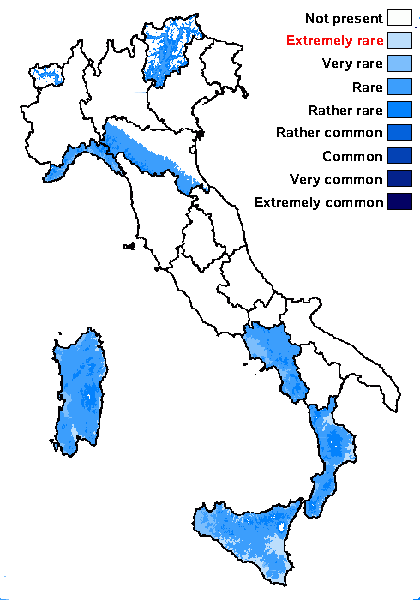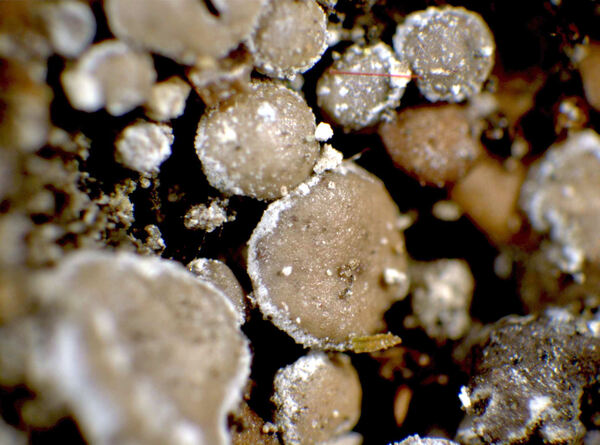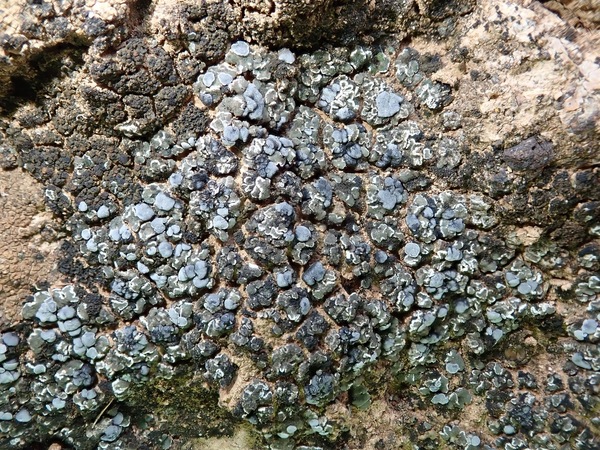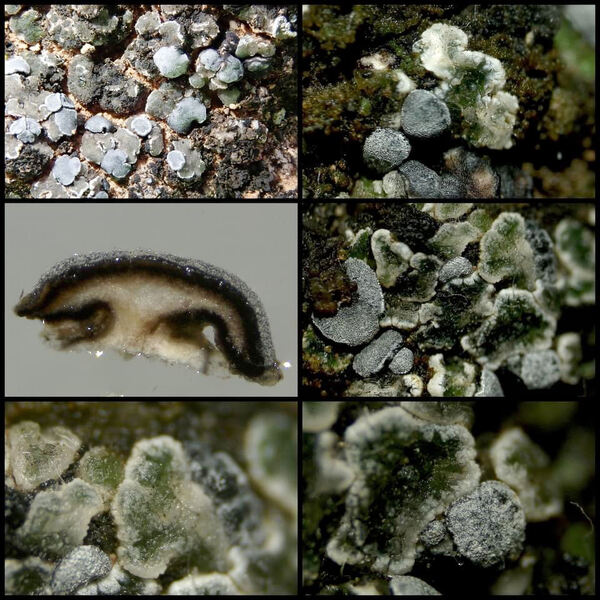Thalloidima albilabrum (Dufour) Flagey
Catal. Lich. Algérie: 63, 1896.. Basionym: Biatora albilabra Dufour in Fries - Lichenogr. Eur. Ref.: 251, 1831.
Synonyms: Lecidea albilabra (Dufour) Dufour; Psora albilabra (Dufour) Körb. non auct.; Toninia albilabra (Dufour) H. Olivier; Toninia albomarginata B. de Lesd.
Distribution: N - TAA, VA (Piervittori & Isocrono 1999), Emil (Nimis & al. 1996, Fariselli & al. 2020), Lig. C - Sar. S - Camp (Aprile & al. 2003b, Garofalo & al. 2010), Cal (Puntillo 1996), Si (Nimis & al. 1994, Ottonello & Puntillo 2009, Ottonello & al. 2011).
Description: Thallus squamulose, reddish brown, often with a greenish tinge, slightly glossy, the squamules 1-2(-4) mm wide, contiguous, orbicular to slightly lobed, weakly concave to weakly convex, with regular and usually deep fissures in the cortex, white-pruinose at margin; lower surface white to pale brown. Upper cortex 70-500 µm thick, including an up to 400 µm thick epinecral layer, sometimes with crystals of calcium oxalates in upper part; algal layer continuous; medulla white, often with crystals of calcium oxalates. Apothecia frequent, lecideine, sessile, strongly constricted at base, 1-1.5(-2.5) mm across, with a black, but most often white-pruinose, more or less flat, smooth disc and a distinct, smooth, concolorous proper margin. Proper exciple reddish brown, sometimes greyish and N+, K+ violet in the outer rim; epithecium grey, K+ and N+ violet; hymenium colourless, 60-70 µm high; paraphyses not conglutinated, simple or sparingly branched and anastomosing in upper part, thin-walled, the apical cell distinctly swollen, with a gelatinous pigment cap; hypothecium brownish. Asci 8-spored, clavate to cylindrical-clavate, the apical dome K/I+ dark blue with a pale, conical-pointed apical cushion (axial mass), the wall I-, but the thin outer gel I+ blue, Bacidia-type. Ascospores 1-septate, hyaline, fusiform, 13.5-22.5 x 3-4 μm. Pycnidia dark, immersed. Conidia thread-like. Photobiont chlorococcoid. Spot tests: thallus K-, C-, KC-, P-, UV-. Chemistry: thallus without lichen substances; apothecia with the Sedifolia-grey pigment. Note: a mainly Mediterranean species found on more or less calciferous ground and in fissures of rocks and walls, often on cyanobacteria or cyanobacterial lichens when young; common only in dry areas, including the Alpine valleys with a continental climate. The species, closely related to T. sedifolium, did not form a monophyletic clade in the study of Westberg & al. (2023b).
Growth form: Squamulose
Substrata: soil, terricolous mosses, and plant debris
Photobiont: green algae other than Trentepohlia
Reproductive strategy: mainly sexual
Commonnes-rarity: (info)
Alpine belt: absent
Subalpine belt: absent
Oromediterranean belt: absent
Montane belt: rather rare
Submediterranean belt: rare
Padanian area: absent
Humid submediterranean belt: rare
Humid mediterranean belt: very rare
Dry mediterranean belt: extremely rare

Predictive model
Herbarium samples
Growth form: Squamulose
Substrata: soil, terricolous mosses, and plant debris
Photobiont: green algae other than Trentepohlia
Reproductive strategy: mainly sexual
Commonnes-rarity: (info)
Alpine belt: absent
Subalpine belt: absent
Oromediterranean belt: absent
Montane belt: rather rare
Submediterranean belt: rare
Padanian area: absent
Humid submediterranean belt: rare
Humid mediterranean belt: very rare
Dry mediterranean belt: extremely rare

Predictive model
| Herbarium samples |
 INDEX FUNGORUM
INDEX FUNGORUM
 GBIF
GBIF
 DOLICHENS
DOLICHENS







